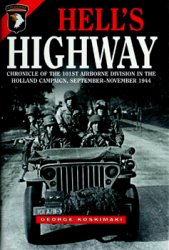The high imperialism of the nineteenth century encountered almost immediate resistance from many colonized peoples. Avoidance, sabotage, and flight were among the most common ways that ordinary people responded to the harsh conditions that colonialism imposed upon them. More organized forms of elite-led rebellion, sometimes aimed at restoring the precolonial order, confronted imperial authorities directly and violently. If some local elites collaborated with colonial powers, they frequently did so to serve their own ends. But beginning in the early twentieth century a more sustained challenge began to dominate the anticolonial politics of the imperial world. The nationalist movements that emerged in this period, with their diverse range of radical thought and action, directly shaped the wave of postcolonial independence after 1945.
World War I and its aftermath were critical in shaping the sensibilities of nationalist leaders. Hundreds of thousands of colonial subjects were conscripted during wartime. They returned from the battlefields of Europe with a deepened suspicion of the civilizational promises of their colonial masters and with an expanded political and social consciousness. The dynamics of Wilsonian peacemaking in the aftermath of the war and the potentialities of the Russian Revolution further radicalized anticolonial thought and action.
Woodrow Wilson’s promotion of self-determination as one of the fundamental elements of the postwar peace brought a number of anti-colonial leaders to Paris in 1919, hoping to wrest some form of autonomy fTom colonial rule. Anticolonial figures from the Egyptian nationalist leader Sa’d Zaghlul to Bal Gangadhar Tilak of India and Nguyen Ai Quoc (later better known as Ho Chi Minh) ofVietnam presented petitions that drew on Wilsonian language to ask for relatively moderate reforms of colonial rule leading to gradual selfgovernment and independence. Their entreaties met with silence from Wilson and the other European imperial powers. At the same time, the peace conference declined to support Japan’s efforts to insert a racial equality clause into the provisions of the peace settlement. But, by articulating selfdetermination as an international norm, Wilsonianism both inspired anticolonial activists and opened up a space through which they could make claims for the legitimacy of movements for independence.
When it became clear that Wilson and his European colleagues had no intention of immediately extending self-determination, some of these frustrated leaders from the colonies began looking to the Bolshevik Revolution as a more alluring path to political independence and social transformation. Anticolonial
Figures such as Jawaharlal Nehru in British India, Tan Malaka in the Dutch East Indies, and Ho Chi Minh in French-controlled Vietnam all became active in projects sponsored by the Comintern, the entity created by the Soviet Union in 1919 to foster worldwide revolution. Some Chinese Communist leaders, such as the cosmopolitan Zhou Enlai, were part of these global revolutionary networks. But Iosif Stalin’s commitment to revolution outside the West was uneven. He ordered dramatic changes in the Comintern approach to revolution, with sometimes disastrous effects for local Communist Parties in the colonized world. Nonetheless, the Comintern organized training schools in the Soviet Union and brought thousands of activists fTom the colonial world to Moscow. They saw the Bolshevik Party and the Soviet state as models for organizing anticolonial action and postcolonial state-making.
Others in the colonial world were drawn to alternative paths out of colonialism beyond Wilsonian internationalism or international socialism. Their efforts point to the persistent inclination of non-Western peoples to use the shared experiences of oppression to organize transnational antiimperialist movements. In 1919, just as the great powers were meeting to map the postwar world, the first Pan-African Congress opened in Paris, with delegates from Africa, the Caribbean, and the United States. The congress was part of a broader pan-African movement that had its origins two decades earlier in the 1900 Pan-African Conference in London. Organized to influence the deliberations over German colonies in Africa at the Paris Peace Conference, the congress issued a series of resolutions to secure rights to land, capital, labor, education, medicine, hygiene, and culture for colonized peoples in Africa and sought their protection under the nascent League of Nations.
The transnational solidarities ofthe pan-African movement would continue to play a powerful role in African and Caribbean affairs in the interwar period and beyond. Many ofthe activities ofthe movement in this period centered on the African diasporic community in London and Paris. Among them was the Negritude movement led by Aime Cesaire of Martinique and Leopold Senghor of Senegal, who articulated expressions of shared African identities in the Francophone world in a variety of literary, philosophical, and political registers. In the English-speaking world, a radical form of pan-Africanism under the leadership of the West Indian George Padmore in the late 1930s combined Marxism, trade unionism, anti-imperialism, and an elastic definition of "coloured" that included Asians. Along with Cesaire and Senghor, political and cultural elites from Africa, among them Kwame Nkrumah and Jomo Kenyatta, and fTom the Caribbean and the United States, including
I. T.A. Wallace-Johnson, C. L.R. James, and W. E.B. DuBois, were actively engaged in pan-African politics in this period. Nkrumah and Kenyatta would come to lead the anticolonial struggle and the first postcolonial states in Ghana and Kenya respectively.
Pan-Islamic and pan-Asian sensibilities also emerged in the first half of the twentieth century. In northern Africa and the Middle East, the pan-Islamic reform movement first emerged among the urban, educated Turks of the Ottoman Empire, but gradually spread to Cairo, Damascus, and other urban centers in the region. It sought to encourage Muslims to collapse their political and religious differences to unite against European imperialism by rethinking the principles and practices of Islam. Al-Azhar University in Cairo attracted students from throughout the Islamic world and became the center for the development and dissemination of pan-Islamic ideas. In Asia, during the first two decades of the century, some elites in China, Korea, and Vietnam responded to the dangers posed by European, American, and increasingly Japanese colonialism through a transregional dialogue and non-Western solidarity that looked to Egyptian reformism of the middle of the nineteenth century, the 1898 Philippine revolution against the United States, and the Turkish constitutional experiments of 1908-10 as sources of inspiration.
Against the impact of World War I and transnational currents of anticolonial thought, radical political and nationalist sentiment emerged more directly in British, French, and Dutch colonies throughout the 1920s and, with the coming of the global Depression, deepened in the 1930s. In Africa, the panAfrican movement shaped anticolonial politics in Ghana, Nigeria, and Kenya in the 1920s, including the formation of the West African Students’ Union in 1925 as a regional vehicle for reclaiming political control from the imperial powers. In the 1930s, labor strikes and organizing pushed anticolonial politics in more radical social and economic directions. In French-controlled Africa, the Islamic-inspired Rif war and Istiqlal Party in Morocco and the Neo-Destour Party in Tunisia sought independence. Egypt emerged as a semiindependent state in the wake of massive demonstrations and strikes in 1919, but continuing British influence limited political independence and stymied efforts by secular and modernist Egyptian political elites to undertake political and economic reform. The 1930s brought a religious revival that sought to restore the supremacy of Islam in Egyptian public life. The Society of Muslim Brothers, which attracted a wide following among students and industrial workers, channeled popular opposition to the continuing British presence and offered proposals for economic reform based on Islamic and socialist principles. In the British West Indies, colonial subjects began to seek racial equality
In the franchise and civil services in the 1920s. A rising black and working-class consciousness in the 1930s further radicalized their demands for independence and socioeconomic change.
In Asia, Mohandas Gandhi came to lead a mass nationalist party in British India capable of mobilizing millions for its revolutionary noncooperation or satyagraha campaigns, most notably his march to the sea in 1930 to protest the colonial salt tax, aimed at securing Indian independence. In the Dutch East Indies, anticolonial parties drew on supralocal religious faith, socialist internationalism, and emergent discourses of the nation in an effort to transcend the diverse local particularities of the Indonesian archipelago, undertake socioeconomic reform, and ultimately drive out the Dutch. Similarly, in Burma, activist monks in the Young Men’s Buddhist Association and later students in the Dobama Asi-ayone (We Burmans Association), whose influences included Irish nationalism, Fabian socialism, and Marxism-Leninism, challenged British colonial rule.
Vietnamese anticolonialism and visions of postcolonial independence in the interwar period reveal some of the larger dynamics and fluidities that animated and constrained anticolonial thought and practice more generally before World War II. The 1920s brought a new generation of nationalists to the Vietnamese political stage, among them the future leaders of Vietnamese Communism. Many of these young radicals were students, sons and daughters of traditional elites, who were impatient at the pace of change. They were as critical of French rule as they were of the precolonial Confucian political order and of what they perceived as the inability of an older anticolonial generation to effectively respond to the predicament posed by French colonialism. The movement also drew on a new social group in urban Vietnam, one that bitterly resented French colonialism. This urban intelligentsia was made up of shopkeepers, smaller traders, clerks, primary-school teachers, journalists, and technicians whose livelihoods emerged in the context of French colonialism. But they deeply resented their economic marginality and the limits the French placed on their opportunities for education and political participation.
Self-consciously experimental and iconoclastic, Vietnamese radical thought was never fully anchored around a body of shared principles. The radicals’ disparate search for individual and societal transformation rested on an almost romantic belief in revolutionary heroism. Within this intellectual milieu, Ho Chi Minh founded the Viet Nam Thanh Nien Kach Menh Hoi (Vietnamese Revolutionary Youth League) in 1925, which became the precursor of the Vietnamese Communist Party. The ideology of Thanh Nien emphasized the
Immediate imperative of the national question rather than social revolution or class issues, borrowing as much fTom indigenous political discourse and the ideas of Thomas Jefferson, Gandhi, and Sun Yat-sen as it did from Marx and Lenin. Ultimately, Ho Chi Minh and many Vietnamese Communists envisioned progressive elites and peasant masses coming together through patriotic ties and the desire for social revolution to throw off French colonialism. Vietnamese radicals, like anticolonial activists elsewhere, were no closer to transforming colonial society and achieving independence at the end of the 1930s than they had been in the early decades of the century. Imperial power remained too strong, and nationalist movements were fragmented and diffuse, with only limited capabilities to mobilize urban and rural populations.




 World History
World History









